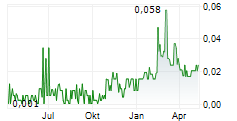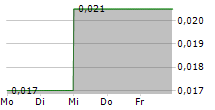
VANCOUVER, BC / ACCESS Newswire / February 24, 2025 / KALO GOLD CORP. (TSXV:KALO) ("Kalo", "Kalo Gold" or the "Company") is pleased to announce the interpretation of historical drilling, geophysics, 12,079 soil, 2,074 trench and 3,632 TerraSpec results, has resulted in a new geological model that has identified three unique gold depositional environments at Aurum Prime on its 100%-owned Vatu Aurum Project, Fiji. This includes the recently discovered Namalau Trend and the identification of both diatreme and surge related gold mineralization that form the Qiriyaga Complex.
Aurum Prime: Three Gold Depositional Environments Identified
Diatreme-Hosted Gold Deposits: Gold mineralization within deep-seated diatreme structures, with historical drilling returned up to 10.0 m at 27.2 g/t gold, including 1.0 m at 120.0 g/t gold within the Qiriyaga Complex.
Surge Deposits: Gold-rich zones formed around diatremes, with historical trenching results up to 30 m at 3.13 g/t gold and up to 60.0 m at 1.74 g/t gold, indicates widespread mineralization potential within the Qiriyaga Complex.
Namalau Trend 1, 2 & 3: A parallel, >2km long, newly discovered epithermal gold system hosting additional high-priority targets, reinforcing district-scale potential.
Upcoming Planned Drill Program: Drilling will target priority targets in the Namalau Trend, including key targets such as Dua and Rua. Drilling in the Qiriyaga Complex will focus on confirming high-grade continuity in diatreme-hosted mineralization and expanding gold zones within surge deposits - both have excellent exploration upside.
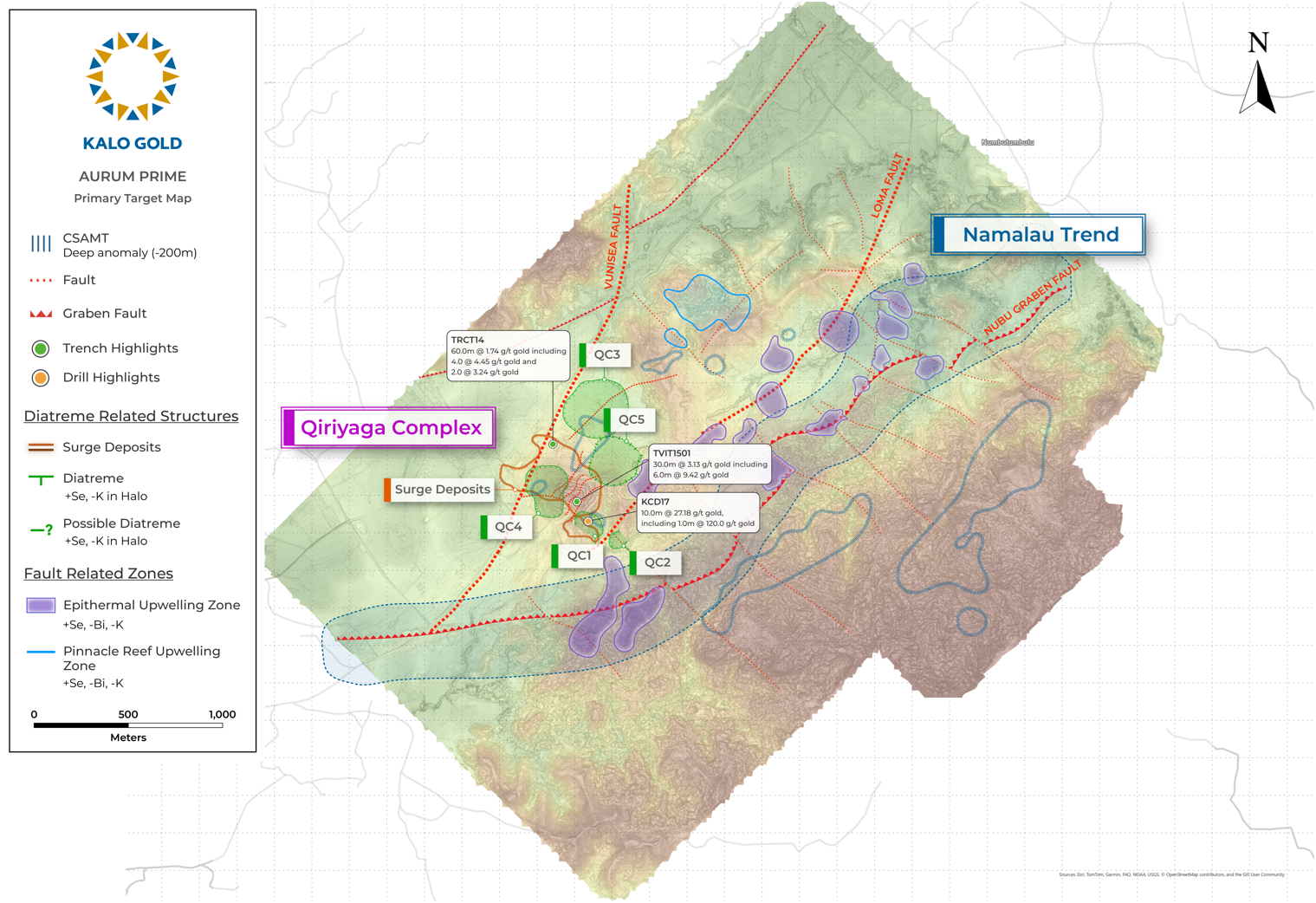
Figure 1: Aurum Prime: Qiriyaga Complex Diatremes (QC1 to QC5) with associated - Surge Deposits in relation to the Namalau Trend.
Terry L. Tucker, P.Geo., President & CEO, Kalo Gold Corp. commented: "Since launching field exploration at Vatu Aurum in September 2024, our geological understanding has evolved dramatically. The discovery of the Namalau Trend in November reinforced the project's district-scale potential, and today, we are advancing even further with the recognition of the Qiriyaga Complex and its associated Surge Deposits. Thanks to the SGDS Hive exploration team, we continue to refine our geological model, integrating geophysics, geochemistry, and structural analysis to pinpoint the highest-priority targets. The extent of epithermal alteration, structural controls, and widespread mineralization indicators points to a large, active and dynamic hydrothermal system with potential for vertically extensive gold mineralization. With a multi-phase drill program planned, our focus is on defining mineralization continuity, expanding gold zones, and methodically unlocking the full potential of the Vatu Aurum Project. Beyond the Qiriyaga Complex, the Namalau Trend-home to key prospects like Dua and Rua-continues to reveal compelling exploration upside, reinforcing the scale of this opportunity. The next phase of drilling will be instrumental in demonstrating the depth and continuity of these gold systems, moving us closer to realizing the full value of this emerging gold district."
Qiriyaga Complex Detail:
Qiriyaga Complex Mineralization: Identification of a cluster of five diatremes, labelled QC1 to QC5 in Figure 1 and 2, provide an excellent exploration target. To date, only QC1, has been drill tested with 49 drill holes that defined the historical resource of the Qiriyaga Hill Gold Deposit4. Historical drilling highlights the high-grade gold potential within the Qiriyaga Complex including KCD17 that intersected 10.0 meters ("m") at 27.2 grams per tonne (g/t) gold from 76.0 m to 86.0 m depth including 1.0 m at 120.0 g/t gold from 81.0 m to 82.0 m5.
Surge Deposit Mineralization: Identification of gold-rich "Surge Deposits" around diatreme structure rims also provide an excellent exploration target. Reinterpretation of trenching and drilling has confirmed the presence of four ring faults around QC1, QC2 & QC4 served as fluid pathways, contributing to widespread gold mineralization.Trenching of Surge Deposit mineralization has returned up to 60.0 m at 1.74 g/t gold (TRCT14) and 30.0m at 3.13 g/t gold (TVIT1501).
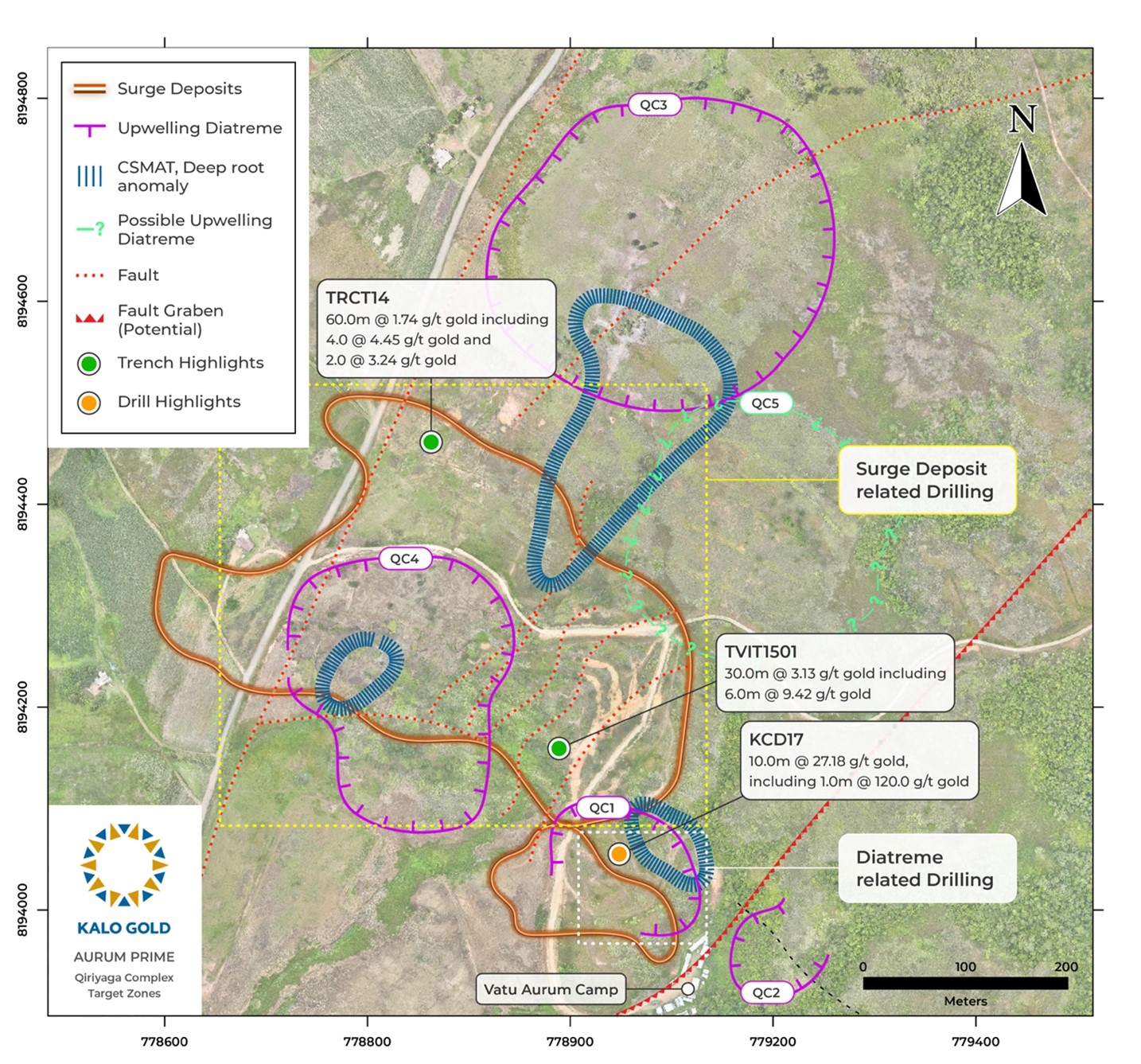
Figure 2: Qiriyaga Complex Diatremes (QC1 to QC5) with associated Surge Deposits.
Geological Overview
Diatremes are deep-reaching, cone-shaped volcanic structures, see Figure 3, formed by explosive interactions between groundwater and rising hot fluids along deep-seated faults such as the Vunisea Fault. These explosive events create fractured and brecciated rock zones that serve as conduits for mineralizing fluids, making diatremes prime targets for gold deposition. Surge Deposits are a geological formation resulting from a pyroclastic surge-a fast-moving, ground-hugging flow of hot gas and volcanic particles ejected during explosive volcanic eruptions. This new geological model explains why historical trenching yielded extensive gold intervals in Surge Deposits, while deeper drill holes in underlying basement rocks encountered little to no mineralization. Geophysical data further supports the deep-rooted nature of the diatremes. A 2023 CSAMT survey identified several anomalies extending over 400 m below surface, reinforcing the potential scale and vertical extent of the system (see Figure 2).
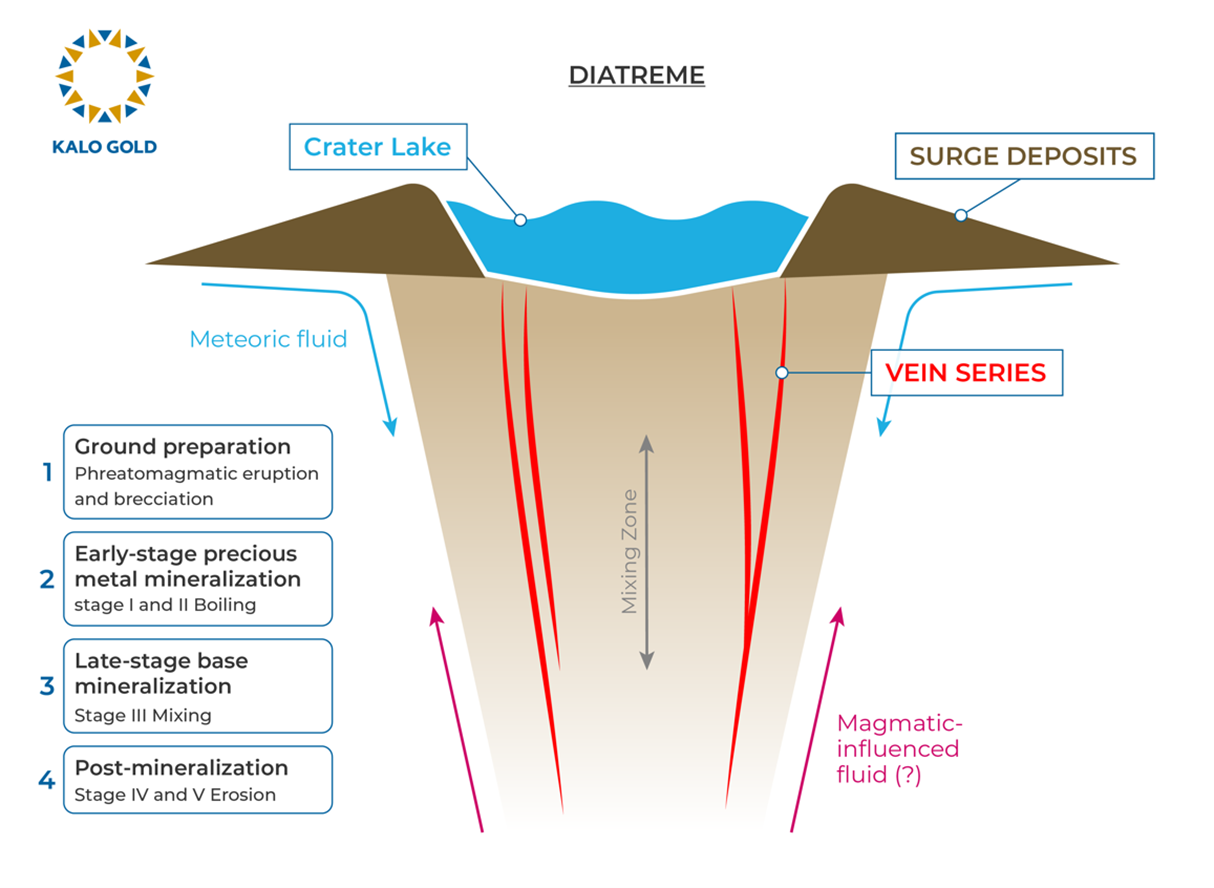
Figure 3: Qiriyaga Complex - simplified diatreme geological model.
Strategic Comparisons with Major Pacific Rim Gold Deposits
The Qiriyaga Complex and Namalau Trend share key geological characteristics with significant Pacific Rim gold deposits. These comparisons provide geological context only and do not imply resource equivalency or future production outcomes.
Lihir Gold Mine (PNG) 6: Hosted within a volcanic caldera, Lihir's deep hydrothermal systems and alteration halos share similarities with features identified at the Qiriyaga Complex and Namalau Trend. The mine's total historical production has surpassed 10 million ounces since operations began in 1997. Additionally, Lihir's gold reserves are estimated at 17.5 million ounces, with a projected mine life of 16 years as of February 2024.
Kelian Gold Mine (Indonesia) 7: Diatreme structures, formed by explosive volcanic activity, can host significant gold mineralization, particularly within associated surge deposits. These surge deposits, resulting from pyroclastic surges, are characterized by well-sorted, layered volcanic materials that can serve as conduits for hydrothermal fluids rich in gold and other minerals. A notable example is the Kelian Gold Mine in Kalimantan, Indonesia, where diatreme breccias and surge deposits have been identified as precursors to epithermal gold mineralization. Studies indicate that these deposits contain accretionary lapilli and were formed by a combination of wet pyroclastic base-surge, fallout, and co-surge fallout processes, creating favorable conditions for gold deposition. Approximately 179 tonnes (~5.75 million ounces) of gold and 145 tonnes of silver during its operation from 1992 to 2004.
Vatukoula Gold Mine (Fiji) 8: Over 7 million ounces of historical gold production from high-grade epithermal veins. The Namalau Trend shares key geochemical and structural attributes with Vatukoula, highlighting its exploration potential.
Exploration Strategy
Kalo Gold is advancing towards a multi-phase drill program designed to systematically test priority targets within the Qiriyaga Complex and Namalau Trend. The program will focus on:
Geochemical Analysis: ongoing processing of outstanding rock, soil and trench samples to refine the geological model.
Drill Testing of Diatremes & Surge Deposits: Expanding beyond the Qiriyaga Hill Gold Deposit to assess the Qiriyaga Complex consisting of four newly identified diatremes and associated Surge Deposits along the Vunisea Fault.
Refining the Epithermal Model at Namalau Trend: Targeting epithermal quartz vein systems at Dua, Rua and Tolu to evaluate mineralization potential at depth.
Structural & Geochemical Mapping: Further definition of gold-bearing hydrothermal conduits and associated alteration halos to refine exploration priorities with trenching, soil sampling and mapping.
These efforts will provide critical insights into mineralization continuity and grade distribution, positioning Kalo Gold for the next phase of exploration at Vatu Aurum.
Qualified Person
The technical information in this news release was prepared, reviewed, and approved by Andrew Randell, P. Geo, principal of SGDS Hive, a qualified person as defined by National Instrument 43-101 of the Canadian Securities Administrators. Mr. Randell is independent of the Company and has verified the data disclosed having conducted two site visits, directly supervised the exploration program, completed review of field data collection protocols, including sampling procedures, analytical methods, and quality assurance/quality control protocols, where applicable."
ABOUT KALO GOLD CORP.
Kalo Gold Corp., a gold exploration company, focused on epithermal gold deposits on the Company's Vatu Aurum Project, located on Vanua Levu (North Island). Kalo holds 100% of two Special Prospecting Licenses covering 367 km², encompassing a regional back-arc basin with volcanic calderas. Historical and ongoing exploration has identified numerous priority epithermal gold targets.
On behalf of the Board of Directors of Kalo Gold Corp.
Terry L. Tucker, P.Geo.
President and Chief Executive Officer
Kevin Ma, CPA, CA
Executive Vice President, Capital Markets and Director
For more information, please write to info@kalogoldcorp.com.
Neither the TSX Venture Exchange nor its Regulation Services Provider (as that term is defined in the policies of the Exchange) accepts responsibility for the adequacy or accuracy of this press release.
Forward-Looking Statements Disclaimer
This news release contains "forward-looking statements" within the meaning of applicable securities laws. These statements reflect management's expectations, strategic objectives, and exploration priorities at the time of this release. Forward-looking statements are not statements of historical fact and include, but are not limited to:
The Company's planned multi-phase drill program, targeting structurally controlled gold zones at Qiriyaga.
Interpretations of geological features, mineralization continuity, and deposit potential, based on geophysical surveys, surface sampling, and historical drill data, are subject to change as additional drilling and verification work is conducted
Comparisons to other gold deposits, including Lihir, Kelian, and Vatukoula, which are for geological context only and should not be interpreted as implying potential mineral resources or economic viability at the Vatu Aurum Project.
Potential for district-scale gold mineralization, subject to further exploration, drilling, and independent verification.
The Company's ability to secure financing, regulatory approvals, and exploration partnerships to advance the project.
Exploration Risks & Uncertainties
Forward-looking statements are subject to geological, financial, and regulatory risks that may cause actual results to differ materially from those anticipated. These risks include, but are not limited to:
Exploration risk: There is no guarantee that current exploration activities will result in an economically viable mineral resource.
Drilling uncertainty: Trench and soil sampling results are not necessarily indicative of subsurface mineralization, and drilling is required to confirm continuity, grade, and extent.
Permit and regulatory risks: Exploration activities are subject to government approvals, environmental regulations, and permitting requirements.
Funding constraints: The Company's ability to execute exploration programs depends on market conditions and financing availability.
Commodity price volatility: Gold price fluctuations may impact the economic feasibility of any future discoveries.
This news release contains "forward-looking statements" within the meaning of applicable securities laws. These statements are based on current expectations, estimates, forecasts, and projections about Kalo Gold Corp.'s business, as well as beliefs and assumptions made by the Company's management.
The reader is cautioned that forward-looking statements are based on assumptions that may prove to be incorrect. Events or circumstances may cause actual results to differ materially due to numerous known and unknown risks and factors that are beyond the control of the Company.
Kalo Gold Corp. does not undertake any obligation to update or revise any forward-looking statements, except as required by applicable securities laws. Readers should not place undue reliance on forward-looking information contained in this release.
For a more detailed discussion of risks and uncertainties, please refer to Kalo Gold Corp.'s public filings on SEDAR+ at www.sedarplus.ca.
References:
1. Kalo Gold Corp. (2024). November 7, 2024, News Release
2. Kalo Gold Corp. (2025). January 20, 2025, News Release
3. Kalo Gold Corp. (2025). February 12, 2025, News Release
4. Tan, R., & Celis, R. (2017). Cirianiu Gold Project Resource Evaluation. Prepared for Kalo Exploration Ltd. Drilling in the Qiriyaga Hill Diatreme, over a limited area of 140 m by 210 m resulted in defining a resource estimate (historical) of 114,598 ounces gold of mostly oxide mineralization (the "Qiriyaga Hill Gold Deposit") starting at surface down to a depth of 45 m. In addition, a resource of 43,863 ounces of gold was reported at the "Vuniubu Ridge Gold Deposit" with a total of 158,831 ounces gold. A Qualified Person has not done sufficient work to classify this as a current resource. Further drilling, sampling, and independent verification will be required before any classification as a mineral resource under NI 43-101 standards. The historical estimate was prepared by Roberto Tan (AusIMM) and Roman Celis Jr. in February, 2017, for Kalo Exploration Ltd. (now a wholly-owned subsidiary of Kalo Gold) in its report "Cirianiu Gold Project Resource Evaluation" using categories and definitions consistent with CIM definition standards for mineral resources and mineral reserves (Nov. 27, 2010) at the time of completion of the estimate, as outlined in NI 43-10, however a qualified person has not done sufficient work to classify the historical estimates as current mineral resources and therefore the company is not treating the historical estimates as current mineral resources. Investors are cautioned that the historical estimates do not mean or imply that economic deposits exist on the Property. The company has not undertaken any independent investigation of the historical estimate or other information contained in this presentation nor has it independently analyzed the results of the previous exploration work in order to verify the accuracy of the information. The company believes that the historical estimate and other technical information contained in this news release are relevant to continuing exploration on the Property - 10 March 2021 Kalo Gold Corp news release.
5. Table 1 - Diamond drill hole KCD17, Qiriyaga Hill Gold Deposit - assay results
Hole | From (m) | To (m) | Interval (m)* | Gold grams per tonne (g/t) |
KCD17 | 61.25 | 70.00 | 8.75 | 36.02 |
including | 61.25 | 66.00 | 4.75 | 64.12 |
and | 76.00 | 86.00 | 10.00 | 27.18 |
including | 80.00 | 83.00 | 3.00 | 69.03 |
Including | 81.00 | 82.00 | 1.00 | 120.00 |
* Intervals are reported as apparent widths unless otherwise stated. True widths are unknown and will require additional drilling to confirm structural orientations.
Table 2 - Diamond drill hole KCD17, Qiriyaga Hill Gold Deposit - coordinates
Hole | Datum | Easting | Northing | Elevation (meters) | Dip | Azimuth | Length (m) |
KCD17 | WGS84 60S | 779041 | 8194104 | 67 | -50 | 142 | 106.45 |
All rock and drill core samples collected by the Company since 2023 have been sent to Australian Laboratory Services Pty. Ltd. in Brisbane, Australia for sample preparation and analysis. Upon receipt at the lab, all samples were dried in an oven at a temperature of 80°C (DRY-24), coarse crushed (CRU-21) and then pulverised to 85% passing 75 microns (PUL-23). The preparation has a very low likelihood of producing inadequate or non-representative samples. Gold grades are obtained by method code Au-AA24 which is a 50-gram fire assay with an AA finish and detection range of 0.005 to 10ppm gold. Samples which return greater than 10.0 parts per million gold are resubmitted with method code Au-AA26 which is a 50-gram fire assay with an AA finish and detection range of 0.01 to 100 ppm gold. The fire assay analysis is considered a total analysis for gold. Additional analyses for 48 other elements were carried out using a 4-acid digestion and ICP-MS finish under the method code ME-MS61m including trace Hg by ICP-MS (Hg-MS42). Quality control procedures are followed for all samples submitted to the laboratory for assay, including strict chain of custody protocols. Quality control comprises of OREAS standards, blank materials and field or preparation duplicate material for testing. Insertion rate is at a minimum of one quality control sample per shipment but in sections of mineralized drill core a standard is inserted at the beginning of the section to establish calibration, a duplicate in the middle of the sequence to test repeatability (for field duplicates) or homogeneity (for preparation duplicates). Mineralized sections are then completed with the insertion of blank material to ensure equipment has been cleaned rigorously and no "smearing" or contamination of grade occurs. Quality control is monitored on each assay certificate as it arrives from the laboratory and then all data is compiled annually. Any discrepancies are immediately addressed accordingly. No quality assurance / quality control (QA/QC) reporting is available for KCD17. From 2011 to 2022 QA/QC protocols were conducted by ALS including internal blanks, standards and duplicates.
6. Lihir Gold Limited. (2023). Geological Overview and Resource Estimates and Newmont Corporation news release dated 22 February 2024.
7. A.G.S. Davies, D.R. Cooke, J.B. Gemmell, T.M. van Leeuwen, P. Cesare, and G. Hartshorn, The Kelian Gold Deposit, East Kalimantan, Indonesia: Its Exploration History, Evolving Geological Model, and Invisible Coarse Gold, Economic Geology, 2008 and Diatreme Breccias at the Kelian Gold Mine, Kalimantan, Indonesia: Precursors to Epithermal Gold Mineralization, A.G.S. Davies, D.R. Cooke, J.B. Gemmell, Economic Geology, June 2008.
8. Vatukoula Gold Mines PLC. Production and Exploration Results.
SOURCE: Kalo Gold Corp.
View the original press release on ACCESS Newswire
